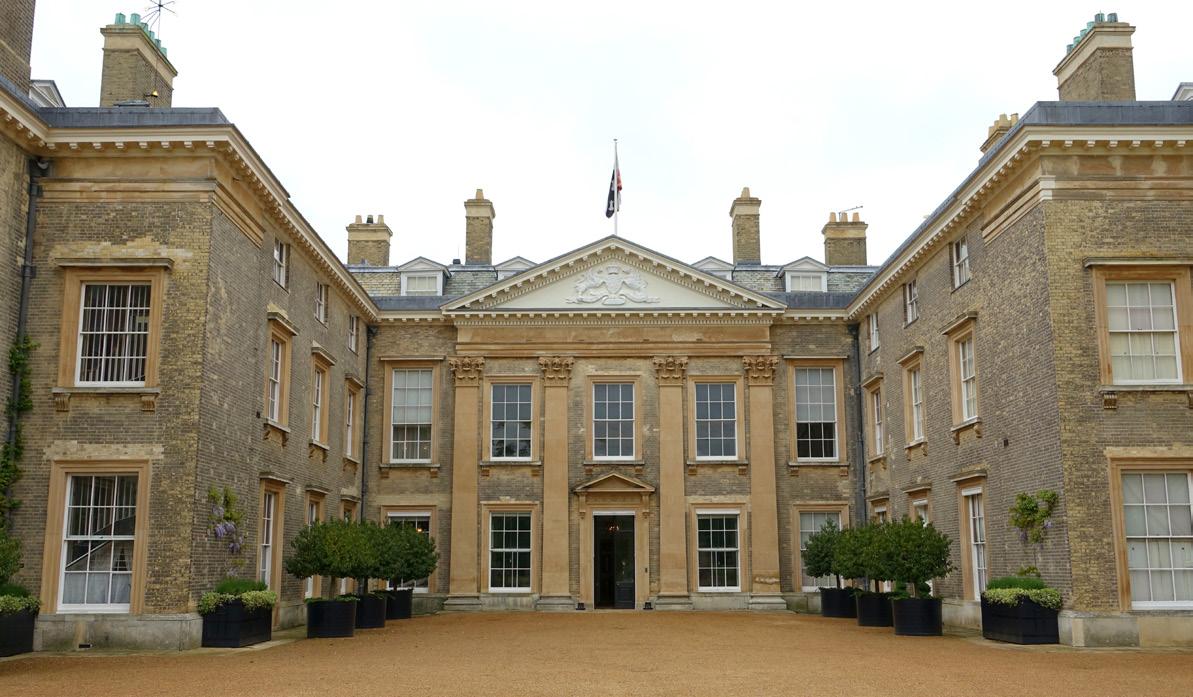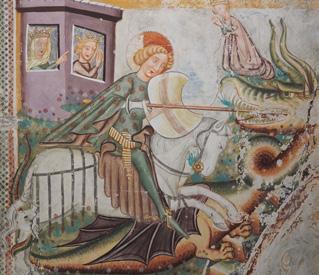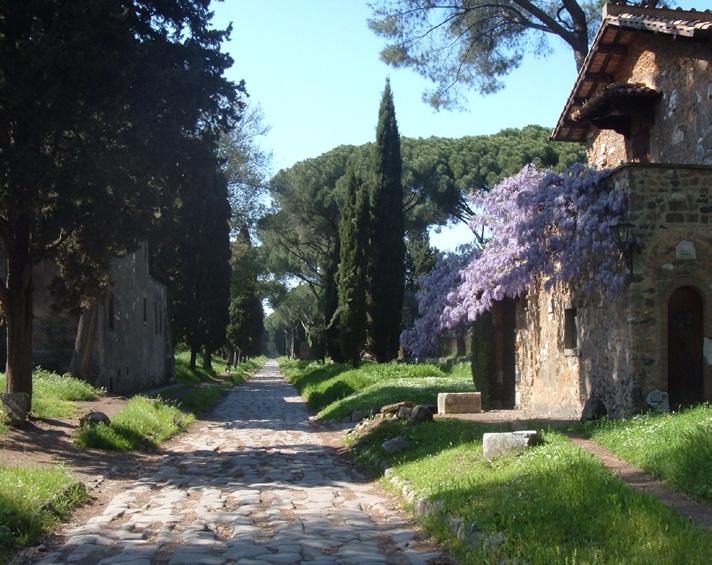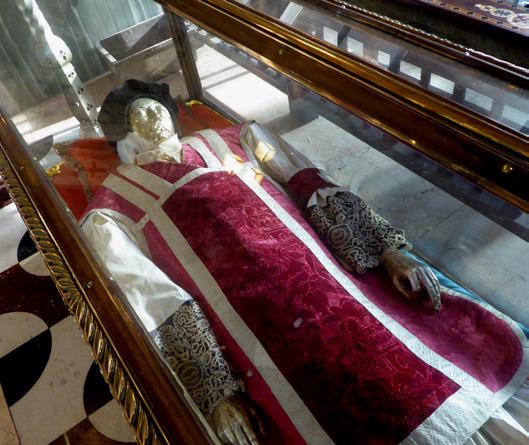CATHEDRAL HISTORY
Green Glory – Rare Porphyry from Greece Patrick Rogers
‘As you go down to the sea towards Gythium you come to a village called Croceae and a quarry. It is not a continuous stretch of rock, but the stones they dig out are shaped like those from a river; they are hard to work, but when worked sanctuaries of the gods might be adorned with them.’ Thus wrote Pausanias in his travel guide to Greece of the 2nd century AD. The stone has was describing was green porphyry, Lapis Lacedaemonius to the Romans. It is an igneous (volcanic) rock consisting of olive green felspar speckled with lighter green crystals of the same material polygonal, cross or star-shaped. The Romans opened the quarry under the Emperor Augustus at about the time of the birth of Christ, and the marble from it, together with purple porphyry from Egypt, was later listed as the most expensive in Rome (the Emperor Diocletian’s Edict of Maximum Price of 301 AD), being priced at 250 denarii (£25) a cubic foot. But long before the Romans, the Greeks were using it to contain libations to the gods, as shown by the recovery of a spouted bowl and a vase-shaped rhyton (a roughly conical container) from 14th century BC Mycenae, and unworked blocks of the marble from a workshop in Knossos, Crete.
Because blocks of more than a few feet in size were rare, the Romans used the marble almost entirely in small pieces, often in combination with purple porphyry, to produce colourful opus alexandrinum or opus sectile patterns for inlaid pavements, baths and fountains. It was subsequently widely used by the Byzantines - in the churches of Santa Sophia in Istanbul and San Vitale in Ravenna, for example and was recycled by the Cosmati marble workers in Rome in the 12th and 13th centuries, again often in combination with purple porphyry, to produce decorated floors, pulpits, episcopal thrones etc. But the marble used at this time had previously been used by the Romans, for the ancient quarry in Greece was not rediscovered until 1829 when a French scientific expedition came across it, and it has never been reopened for commercial purposes.
A broken boulder of green porphyry on the Hill of Psephi
Boulders of the marble can be seen today emerging from the soil between the villages of Alai Bey (now Faros) and Stephania in Laconia, beside the road from ancient Croceae to the sea north-east of Gythion. The main quarry was on a hill named Psephi, which overlooks the road about half-way between the two villages. On the summit stands a ruined Turkish watch-tower with views across the plain towards the distant sea. The tower, said locally to have been destroyed by the Americans during the Second World War, is concealed from the road by olive trees and is itself overgrown by bushes and wild flowers. Around it, and on the southern and western slopes below, lie boulders and fragments of green porphyry, many of them now a speckled rusty brown colour as a result of centuries of exposure to the elements. 16
All that remains of the quarry on the Hill of Psephi
In Westminster Cathedral panels of green porphyry, paired with the Egyptian purple variety, can be seen decorating the pulpit, made in Rome in 1902 (although remodelled in 1934). It was also used on the floor of St Joseph’s Chapel in 1939 and, rather more successfully, on that of St Paul’s Chapel in 1940. This floor, like the pulpit, is in the style of the Cosmati. The last time the marble was used in the Cathedral was in 1960, for inlaid paving (also Cosmatesque) below the statue of Our Lady of Westminster at the 13th Station of the cross. But the largest example, of unknown date, is an irregularly shaped block supporting a crucifix, on the staircase above the main entrance to Cathedral Clergy House and illustrated here. Oremus
APRIL 2021













